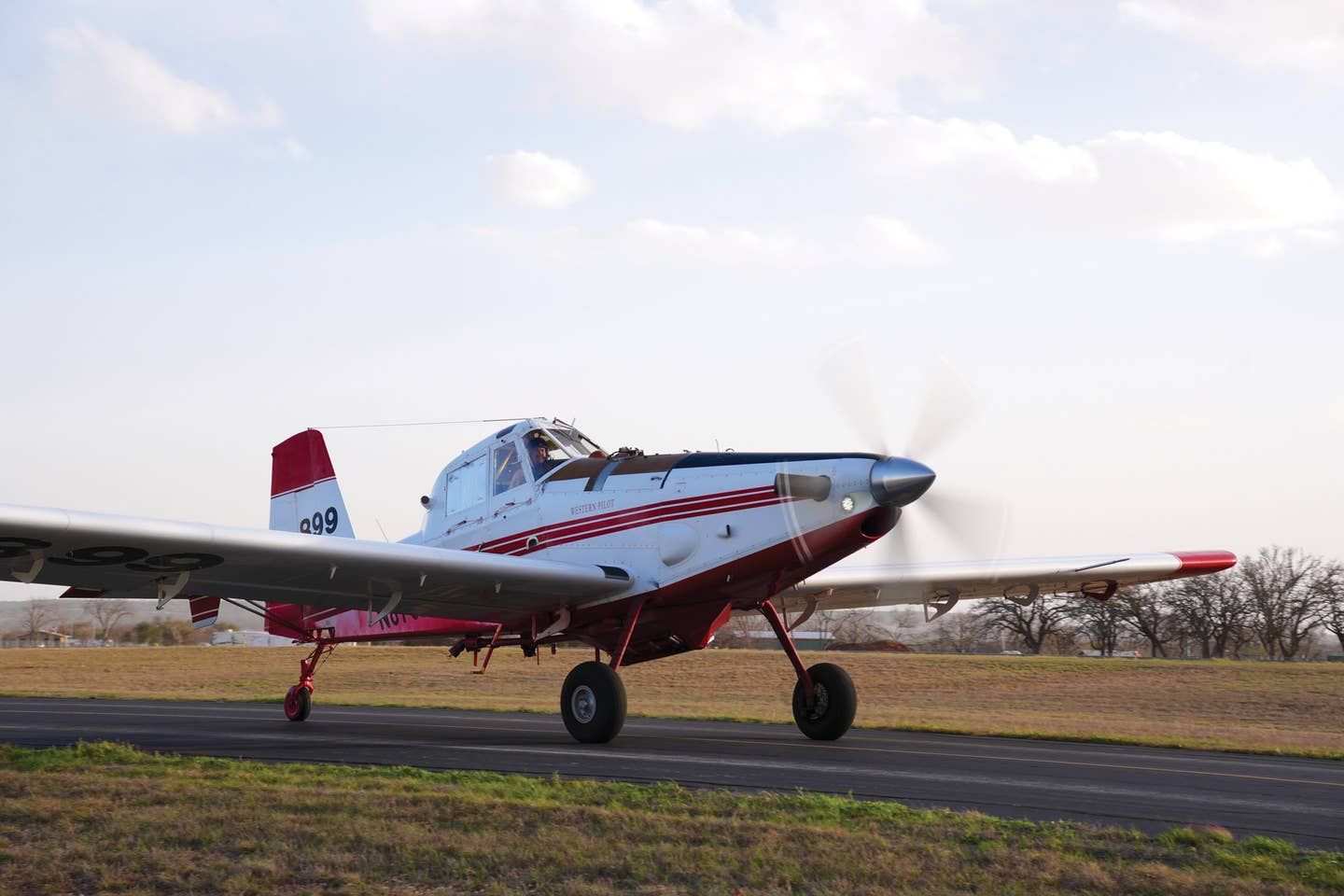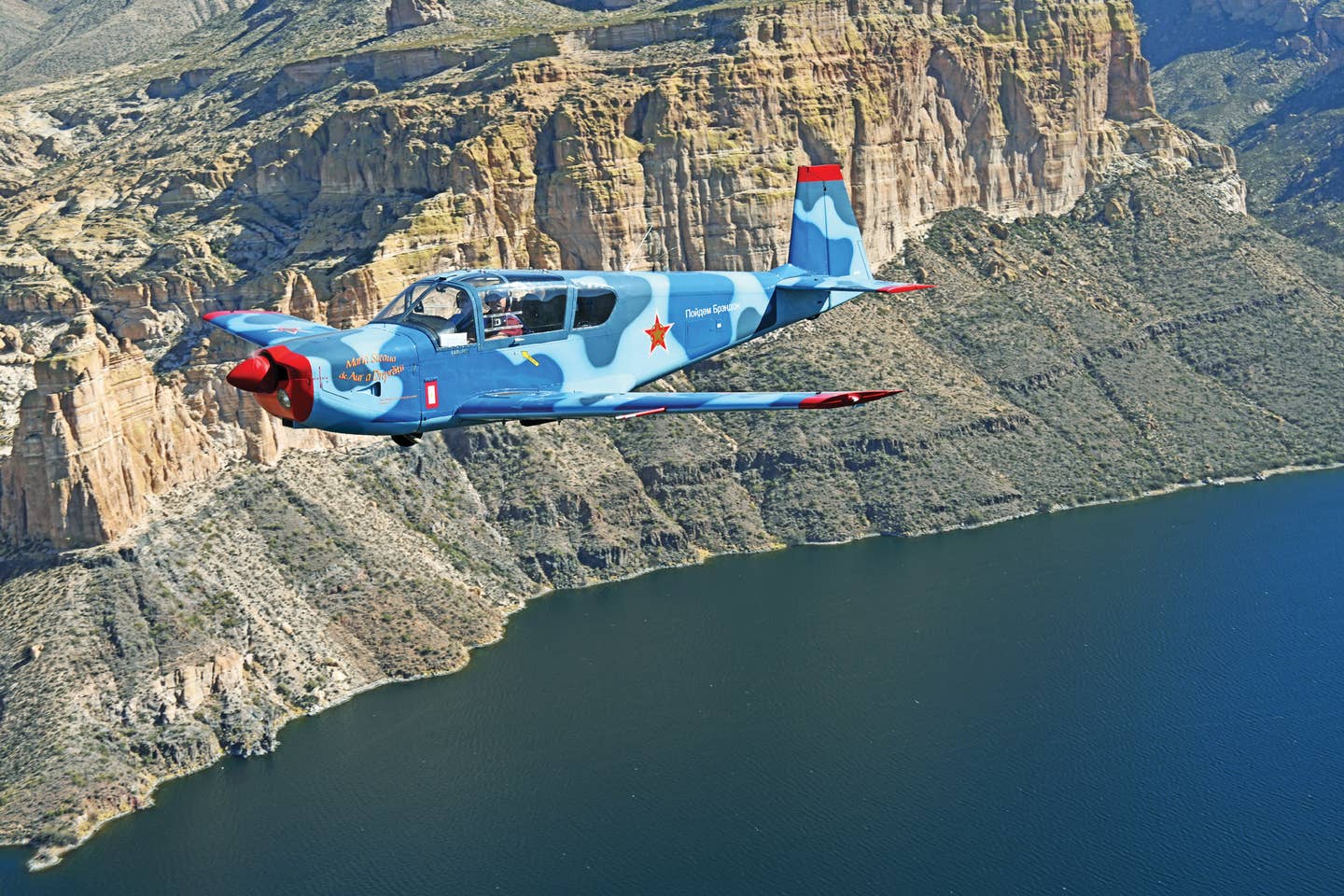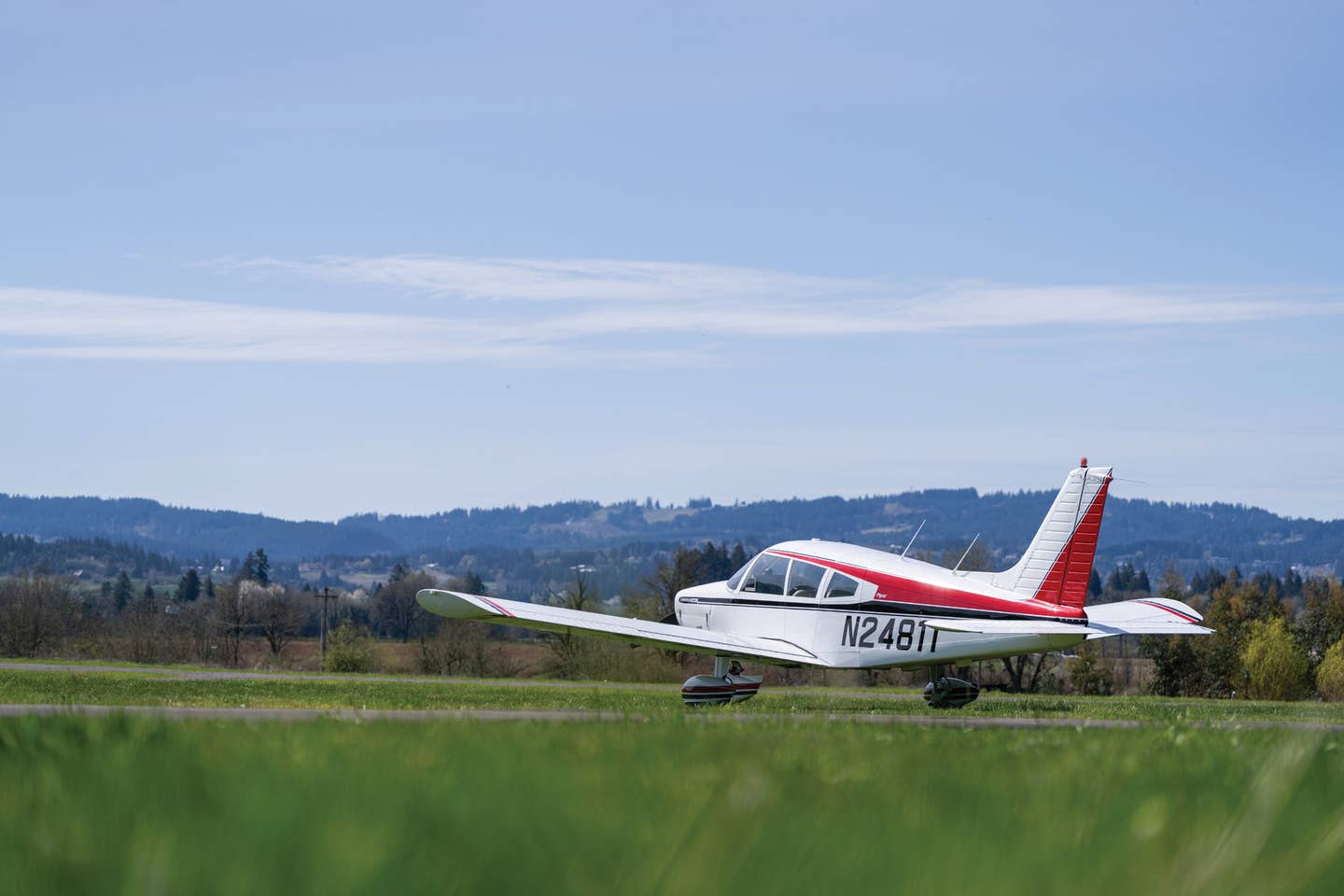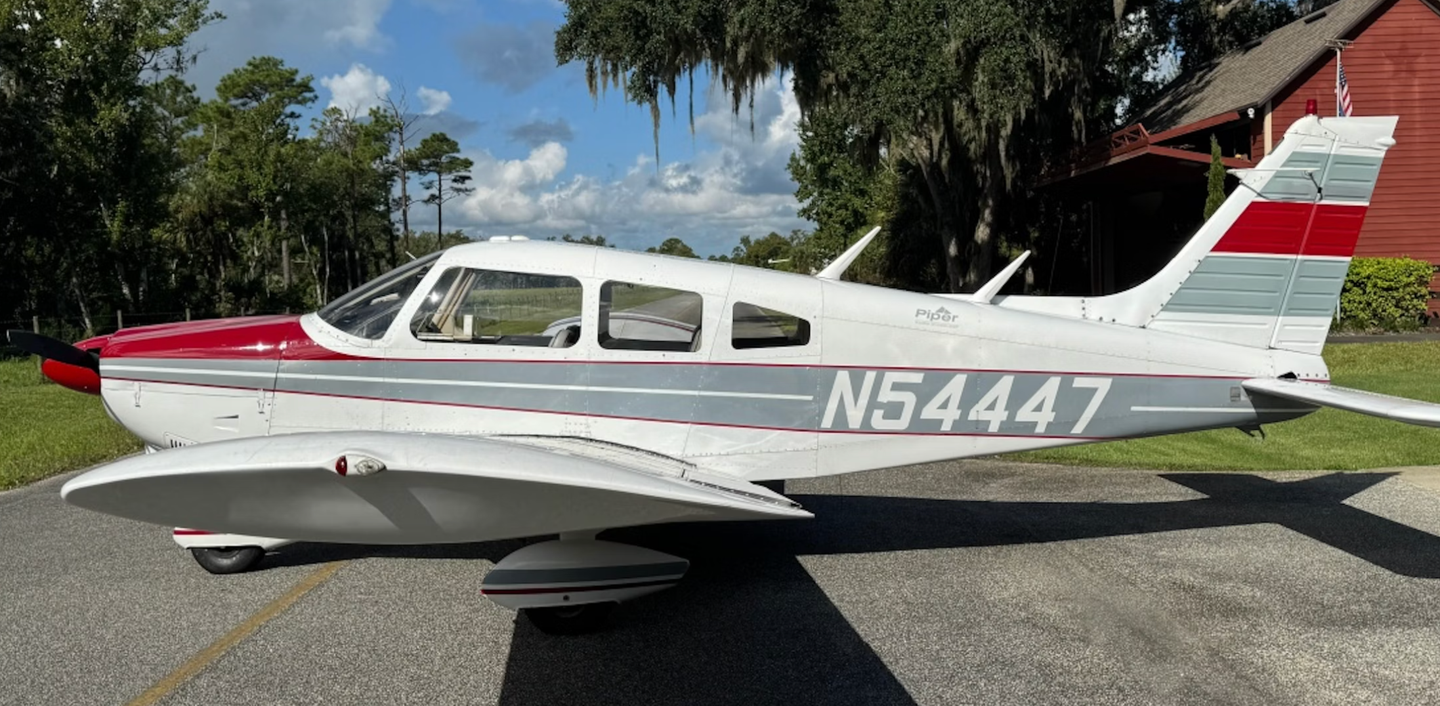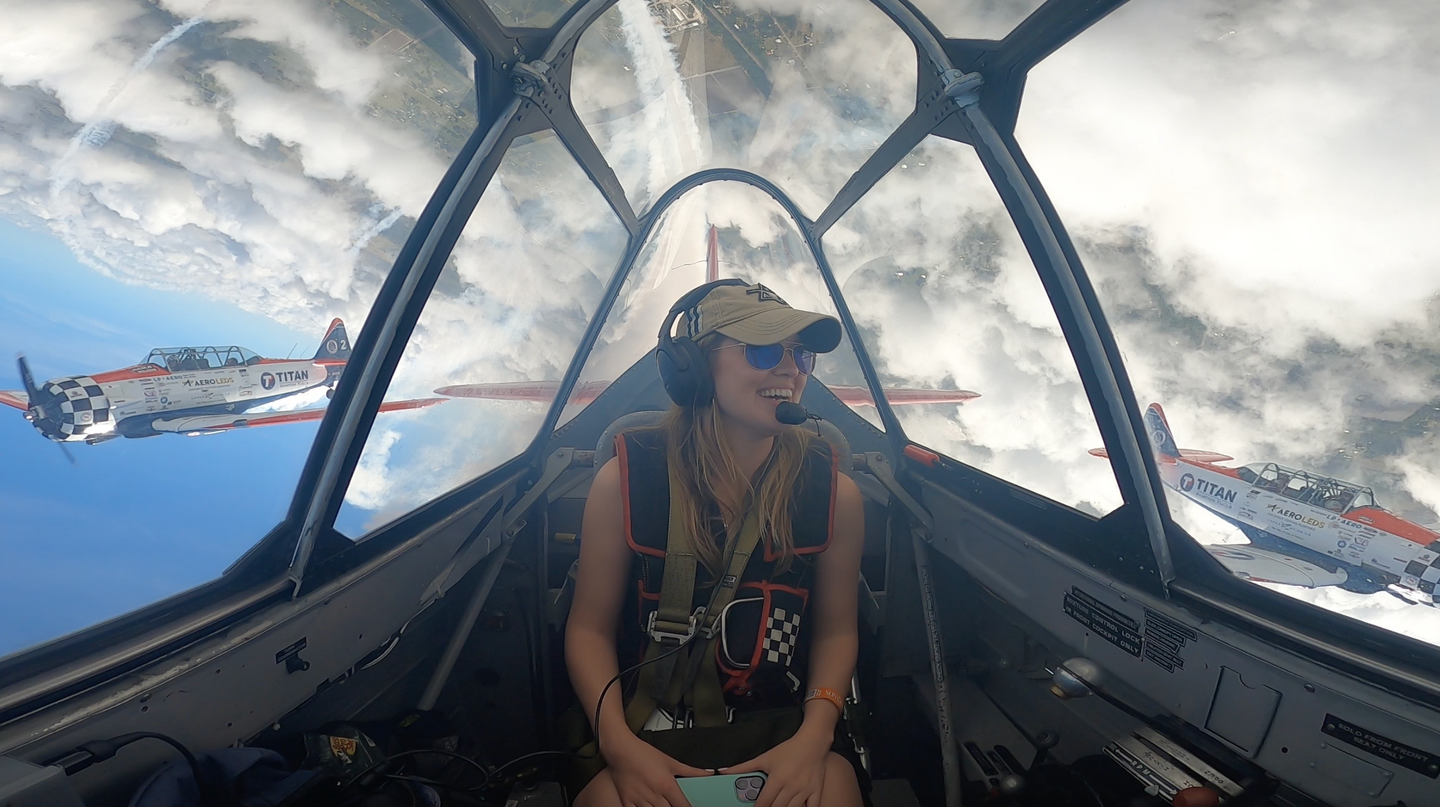The Top 10 Planes Of All Time: WARNING: This List Goes To 11.
No holds barred. If it flies in the air with a pilot at the controls, it qualifies. This list plays no favorites, takes no nostalgia into account. And we guarantee that you’ll hate some of these. Nevertheless, we proudly present our list of the most outrageously great planes ever.

Two of the most popular questions, at least for pilots and other students of aviation history, are: What are the top 10 planes of all time, and which one's the greatest of them all?
At first glance, it seems a silly idea that you could even come up with an answer. After all, planes come in so many different shapes and sizes, with an equal number of mission types to match. How could you possibly choose just one?
This is how.
We started with a group of really great airplanes, or at least we tried to. We started with 10 of them before deciding, as they did in Spinal Tap, to make this one go all the way up to 11. We thought of consciously working to make it a cross-section of aircraft types, but that happened automatically.
But looking at the different kinds of mission types, i.e., training, personal transportation, commercial transportation, fighters, bombers, reconnaissance and more, we decided to narrow things down even more by asking ourselves if there were a top dog among those planes. Surprisingly, the answer to that question was often an unequivocal, "Yes!" Who knew?
Before you begin, consider these bizarre facts about the most outrageous top 10 list of planes you'll ever see. For starters, there are only two non-American planes on the list. There are five planes that are advertised as supersonic, one other that might have gotten there, four with propellers, three with rocket motors, eight that are no longer being produced, and one that was first built in 1956 and is still in production today.
Finally, after our Greatest Airplanes Of All Time, we present 25 others that a lot of you will argue belong on the main list. In many cases, you'd have a strong argument. Enjoy!

5. Boeing 747
The first jumbo jet has gone through a half-dozen versions in its 50-year history. Boeing has turned out more than 1,500 of the enormous jets, which are one of the largest aircraft ever built and one of the most successful aircraft, period. The original 747 was a revelationâhuge, fast, sophisticated and democratizingâand it has only continued to get better and better over its half-century-plus lifespan. The 747 remains in production, though Boeing is focusing on building freighter versions of it now, as twin-engine aircraft such as the Boeing 777 with huge turbofan engines rule the skies. Many think of the 747 as a lumbering giant, but itâs anything but. With a cruise speed north of Mach .85, itâs one of the fastest commercial transport jets. The latest 747, the 747-8, typically carries 467 passengers.
Margin of error: 15%. Contenders: Boeing 777; Airbus A300; Boeing 737; Boeing 707; Boeing 787.

2. Piper Cub
Before you get started, this is not a nostalgia pick. The Piper Cub is a much-beloved airplane, one that many of us associate with a bucolic image of aviation in simpler times. And it is that. But itâs also one of the most revolutionary airplanes in history and one of the most important. When C.G. Taylor designed the first Cub in the late 1920s, he was trying to do what many others were attempting at the same time: to build an affordable, easy-to-fly personal aircraft that would be useful for a wide variety of trips. Other attempts to design such a plane failed.
Some, like Aeroncaâs C-3, nicknamed the âflying bathtub,â were ungainly, underpowered and uncomfortable. With his âCub,â Taylor hit upon a magic recipe that resonated with customers. But it was the Depression, so the Cub might never have become the icon it is without the intervention a few years into its life of William T. Piper, who bought the company and updated the plane to that imperfect thing of beauty we know as the Piper J-3 Cub. The Cub has issues: The pilot in command, both when solo or with two aboard, sits in the rear of the two tandem seats, and getting into and back out of the thing was and is a young personâs exercise. The Cubâs flying manners are more than a little kite-like, and visibility while taxiing is limited. But somehow these liabilities were nothing compared to the overall joy of the J-3, because once youâre in a Cub, and especially once youâre flying it, itâs the epitome of the joy and beauty of bare-bones flying. Thatâs why, for 85 years now, the icon of personal flying is as beloved as ever.
But thatâs not all. As a plane that an ordinary person could buy, learn to fly and keep in good shape on a shoestring, the Cub gave rise to what we now know as personal aviation. It wasnât long before the J-3 was supplanted by improved Pipers and a host of competitors, some of which got faster and more sophisticated, and the whole thing evolved into a segment of aviation that is for all the people, one that, in our view, is one of the crown jewels of America. And all of that can be traced back directly to the Piper Cub.
Margin of error: Zero. Contenders: None. Pretenders: Aeronca Champ; Taylorcraft; Erco Ercoupe.

Lockheed Martin F-22 Raptor
Say what you will about it: It costs a boatload of dough, $350 million a pop, all up. It was late. It was way over budget, and some say in todayâs global political world, we donât even need it. But from a pure design perspective, the F-22 is the all-around most capable airplane ever, and by a good margin. The F-22 is the only full-up fifth-generation air superiority fighter in the world thatâs in full production and thatâs fielded. And besides, itâs better than the others, anyway. The F-22 is capable of a supercruise (that is, sustained faster than the speed of sound flight without afterburner) of Mach 1.85; itâs incredibly maneuverableâthe first time we saw a slow flight demonstration, we were absolutely spellbound, as this plane is capable doing things that look aerodynamically impossible; it features stealth technology; and, with a range of 1600 without long-range tanks, it can go a long ways between refuelings.
Margin of error: 25%. Contenders: McDonnell Douglas F-4 Phantom; Lockheed Martin F-35 Joint Strike Fighter; F-117 Stealth Fighter; F-15 Eagle; F/A-18 Hornet.

7. Space Shuttle
To those who might argue that this is more a spaceship than a plane, weâd counter, true! But the fact is, it was both a plane and a spaceship. If Concordeâs designers set out to do the impossible, the Space Shuttleâs creators were on a mission to do the impossibleâer, to build and field a spaceship that could serve as a launch vehicle, orbiting space station and re-entry vehicle, all in one. The idea was really a simple one, to make a reusable space vehicle, so you didnât have to build an enormously expensive and time-consuming one for every launch.
There were 135 missions, one of which, Challenger, was a launch failure that killed seven, and one was a re-entry failure, in which the craft broke up when it re-entered Earthâs atmosphere. It is a huge aircraft, too, capable of transporting payloads of 60,000 pounds to low Earth orbit and 35,000 pounds to the International Space Station. The airplane part was extraordinary. After it reentered the Earthâs atmosphere, the Shuttle would be a really fast glider, its pilots trained to bring that big craft back to a nose-high landing, no go-arounds available, and they nailed it every single time.
Margin of error: Zero. Contenders: None. Pretenders: The Soviet space shuttle Buran. Number of Buran missions: One. Buranâs Fate: Destroyed when its hangar collapsed upon it.

9. Lockheed C-130
The test of time is a good way to judge success, and in a marketplace like aviation, utility and reliability go a long way toward keeping customers satisfied and budgets in the black. The C-130 Hercules, a medium transport built by Lockheed-Martin (just Lockheed for much of its production life) is just such a plane. The big, four-engine transport is not only rugged and reliable, but itâs also highly convertible, so it can play several different roles, from search and rescue to troop hauling to cargo transport to surveillance and more. The plane is one of the longest-serving military planes in U.S. history and has the longest military production history of any plane, not just in the United States but also in the world. The C-130 first flew in 1954, and it has stayed in continuous operation since then, in part because it was the lucky recipient of a design well suited to be mated to a technology new at the time, the turbine-powered propeller engine, referred to as the turboprop, that was not only perfect for the C-130 but also became better and better suited for it over time as turboprop power and fuel efficiency improved.
A big, strong, highly reconfigurable platform with a lot of uses, the C-130 was ready for the growth. It has, in fact, been upgraded several times; in all, there have been 12 editions of C-130, some of them special mission models, and several dash-number-specific upgrade programs have been implemented as well. In all, Lockheed-Martin has built more than 2,500 C-130s.
Margin of error: Zero. Contenders: Airbus A400M Atlas; Douglas C-54; Fairchild C-123.

8. Cirrus SR22
The Cirrus Aircraft SR22 isnât the most numerous single-engine personally flown aircraftâseveral others, including Cessnaâs remarkable 172, have numbers that dwarf the 7,000-plus SR22s that Cirrus has turned out since the planeâs introduction in 2001. A four-seaterânew ones have room for a fifth occupant to squeeze into the back rowâthe SR22 is the ultimate expression of the personally flown piston single.
Fast, supremely comfortable, sophisticated to beat the band, and oh-so-pretty on the ramp, the SR22 tapped into a market for such a plane. Its approach, fixed landing gear for a high-performance single, big seating area, advanced technology and, oh yeah, a whole-airplane recovery parachute system, which Cirrus dubbed CAPS (for Cirrus Airframe Parachute System), that will lower the entire plane to the ground, passengers and all, safely in one piece. While the original SR22 was positioned for a wide audience, the company soon found that it costs a lot to build airplanes and that every option it offered was being gobbled up. The resultant steady price rise has seen the SR22 go from less than $300,000 to nearly a million dollars over its almost 20-year history, which hasnât affected its popularity. It remains the best-selling single-engine aircraft of the last 20 years and one of the best-selling ever.
Margin of error: 50%. Contenders: Cessna 172 Skyhawk; Beechcraft Bonanza; Cessna 206; Cessna 210; Mooney M20; Piper PA-28; Piper Malibu/Mirage.

1. Lockheed SR-71 Blackbird
So, our choice as the greatest airplane of all time is the Lockheed SR-71 Blackbird. Developed in a secret government program by the great Kelly Johnson of Lockheed Skunk Works fame, the SR-71 is the fastest air-breathing airplane ever. With a top speed of better than Mach 3, it is also the fastest piloted airplane ever of any kind that could take off on its own. The idea behind the SR-71 is incredibly ambitious, to build the worldâs fastest, highest-flying operational aircraft ever, and all in the Cold War pursuit of keeping an eye on the Soviets. The SR-71 made its first flight in 1964, and over time Lockheed built 32 of them. Despite the improvement in Soviet missile defenses, the Blackbird kept on earning its keep, flying for more than 30 years before being retired for good in 1998, its jobs having been taken over by a combination of drones and satellites. But what an amazing plane it was!
Margin of error: For top 10, zero. For top spot, 50%. Contenders for its mission: Lockheed U-2. Contenders for No. 1 spot: Piper Cub; Douglas DC-3; Boeing 747; Lockheed Martin F-22.

Douglas DC-3
What in the world is this plane doing on this list? The DC-3, a radial-engine toting, taildragging, mud-bellied, heavy-hauling twin designed in the mid-1930s surely doesnât belong on a list alongside supersonics and space planes, does it? It does. Launched as a domestic airliner in the days when piston engines were a clearer choice than turboprops for the important reason that turboprops didnât yet exist, the DC-3, with its seating for up to 32 passengers, immediately earned a lot of business from the fledgling U.S. airline industry.
And when World War II started heating up, Douglas went into overdrive, producing around 10,000 DC-3s for the war effortâin all, the company cranked out more than 16,000 of the aircraft, which were known as the Gooney Bird, Dakota and C-47 (the latter among numerous other military designations). The Soviet Union built almost 5,000 of them under license, and even Imperial Japan cranked out nearly 500 DC-3 clones. In addition to its passenger-carrying pedigree, the DC-3 has been a parachute jump plane, an agricultural sprayer, a freighter and an executive transport. As of the turn of the century, there were nearly 500 DC-3s still in commercial use in dozens of countries around the world.
Margin of error: 1%. Contenders: Beech D-18 Twin Beech; de Havilland Twin Otter.

North American X-15
Itâs impossible not to include on this list the fastest and highest-flying plane of all time, though there were two things about it that we werenât crazy about: It didnât take off by itself, and it was a glider for most of its trip. The North American X-15, as was the case for the Bell X-1, which was the first supersonic airplane, was launched by a mother ship. The X-15âs boost was courtesy of a Boeing B-52 specially outfitted to carry the X-15 aloft. But apart from that, this thing is mind-bogglingly awesome. It holds the record for the fastest aircraftâin fact, it holds all 199 top spots. In climb, it was faster than the next-fastest plane ever, the SR71, was in level flight. It was also the highest-flying plane ever, with a ceiling of better than 350,000 feet. Several of its dozen pilots earned astronaut wings for their flights. After the X-15 ran out of fuel, it became, like the Space Shuttle, a really bad glider. Landings were made on Rogers Dry Lake on skids at about 200 mph. Its pilots call the X-15 the most challenging and rewarding plane they ever flew.
Margin of error: Zero. Contenders: Youâre joking, right?

11. Antonov AN-225 Mriya
Big is goodâthat is, when it does something useful, as in carrying lots of passengers (see Boeing 747), bombs (not listed, but Boeing B-52) or a prodigious load. When it comes to that last one, the one and only champion of the world is the Antonov An-225 Mriya (Ukrainian for âdreamâ). By wingspan, tail height and length, itâs the biggest airplane in the world. It is inarguably the biggest load hauler. The humongous Antonov holds the record for the biggest load carried, 545,000 pounds, and its listed payload is nearly twice that of the Boeing 747-800 and nearly four times that of the Airbus A380. How many copies of the cargo plane are there? Just one. Built in 1988 to carry the Russian Buran space shuttle, it has since flown as a commercial cargo carrier, its dual claims to fame being the ability to carry very heavy and very large loads while having sufficient space to carry larger loads than other plane in the world. The An-225 is powered by six turbofans outputting more than 50,000 pounds of thrust apiece. They clearly get the job done.
Margin of error: 30%. Contenders: 747 Dreamlifter; Airbus Beluga. Pretenders: Everything else.

10. Concorde
Our inclusion of Concorde on our list of amazing planes will be among the least controversial. Anytime the goal is to do the impossible and you pull it off, well, that deserves recognition. But when you look at what Concorde did to become the worldâs only truly successful commercial passenger-carrying supersonic aircraft, itâs even more impressive. And itâs remarkable the plane made it into production at all, that the team, composed of British and French groups (itself noteworthy for its degree of difficulty) overcame huge aerodynamic, regulatory, legal, environmental, human-factor and commercial hurdles to build a Mach 2.02 commercial airliner.
Was it a commercial success? Hardly. It was subsidized throughout its service life because, with its combination of limited available routings (since it couldnât overfly land at supersonic speeds), low passenger capacity (a maximum of 128 passengers, though most carried closer to 100), too-loud engines and very high fuel usage, it wasnât a winning commercial or environmental proposition. Its technical achievements, however, are mind-blowing, such as anti-skid brakes, a droop nose for better visibility when landing, full-time autothrottle and autopilot, fly-by-wire flight controls and in-flight fuel distribution to combat CG changes in flight. All that, and itâs one of the most beautiful airplanes ever built.
Margin of error: 10%. Contenders: Tupolev Tu-144. Also beautiful. It flew first. In service for seven years, with 16 built. Faster than Concorde in cruise. But its range was 20% shorter and fuel burn higher, and it needed afterburners for supercruise.

Boeing B-52
Boeingâs big eight-engine B-52 became the heavy bomber that the United States used to present its nuclear Cold War face to the world. The engines, two coupled pairs per side, were the best Boeing could do in the early 1950s, though as engine technology has improved, so, too, has the B-52âs useful life. It has been in continuous service since 1955, and the approximately 750 units that Boeing built between 1952 and 1962 proved enough to keep the big bird flying high for 65 years.

Beech Baron
The ultimate expression of the personal piston twin is the Beechcraft Baron, especially the â58 Baron,â which features great load-hauling ability, excellent speed, great flyability and real panache. It continues in production today and will celebrate 60 years in 2021.
Photo courtesy of Wikipedia Commons (San Diego Air & Space Museum)

Beech Bonanza
The Bonanza was this-close to being on the list, and we wouldnât argue hard that it was a mistake to leave it off. The first truly practical, fast, affordable and easy-flying four-seater ever, the Bonanza was a decade or more ahead of the competition and continues in production even today.

Staggerwing Beechcraft
A masterpiece of art-deco design, the Beechcraft D-17S Staggerwing Beech is fast, comfortable, sporty and practical. A product of pre-war 1930s aviation thinking, it paved the way for the future of high-performance personal travel. It was, in essence, the Learjet of its day.

Beechcraft King Air
The King Air was an outgrowth of the companyâs twin-engine development, and it has continued to be a good seller and much-beloved load hauler for private pilots and corporate operators for decades. Fast enough, with payloads and operating economies that light jets canât touch, the King Air has continued to earn its keep. It is still in production more than 60 years after Beechcraft first brought it to market.

Boeing B-17
The B-17 is the most-produced Western bomber ever, and it has become the symbol of the Allies taking the fight to Germany.
Photo by Airwolfhound/Wikimedia Commons

Boeing 707
The big four-engine Boeing jet wasnât the first turbojet airliner, but it might as well have been. It defined what air travel would be in the modern age, up to present day, in fact, and was the benchmark against which all competing designs were gauged.
Photo by Boeing_707-138B_Qantas_Jett_Clipper_Johnny_N707JT.jpg: Phinalanjiderivative work: Altair78 / CC BY-SA (https://creativecommons.org/licenses/by-sa/2.0)

Cessna Citation X
The fastest civil aircraft ever, the Citation X (as in the numeral â10â) defined high-speed U.S. coast-to-coast travel, making private business travel faster by far than airline flying.
Photo by Flickr User Cory W. Watts

Cessna 182
One of the most-produced planes of all time, the 182/Skylane is arguably the most utilitarian affordable personal plane ever. Featuring a much more powerful engine than its 172 predecessor, the 182 was faster, carried four and a good load of fuel, and featured all the easy flyability of the Skyhawk. And itâs still in production today.

Cessna 172
The most-produced aircraft of all time, the 172/Skyhawk proved itself the perfect first family plane and today is the most popular trainer in the world. Its secret might not be in what it does spectacularly, because it arguably does nothing outrageously well, but in its overall goodness. It flies great, itâs cheap to operate and own, itâs fun to fly and has a great view of the world below, all while being a great trainer.

Boeing B-29
The Superfortress was a first in many ways, including being the first and hopefully only aircraft to ever drop a nuclear bomb in wartimeâtwo, in fact, when it was used to bomb Japanese cities Hiroshima and Nagasaki, which effectively ended the war in the Pacific. As an aircraft, it was revolutionary, featuring a huge payload, a pressurized forward section, and extraordinary range. It had a short life, as turbine-powered bombers soon made it obsolete, but it remains one of the most significant aircraft in history.

Gulfstream V-650
The very epitome of private jet flying, the G650 is fast (Mach .925), capacious, light-filled and long-legged, with a range of 7,000 nm. This $70 million bizjet opens the world to only the richest private flyers.
Photo courtesy of Gulfstream

Learjet Model 23
While it might not technically be the first bizjet ever, it is, for all intents and purposes, the first bizjet ever. Designed specifically for that role, the Model 23 was really fast. And while it didnât last long in production, giving way to improved versions, it is still the âLearjetâ that people talk about when they talk about bizjets.
Photo courtesy of Wikipedia Commons

Lockheed Constellation
With its tri-tails and creamy symmetry, the Connie helped transform air travel into a mass-market mode of transportation while being one of the most beautiful planes ever, to boot.

McDonnell Douglas F-4 Phantom
The McDonnell Douglas F-4 Phantom II was used in front-line combat duty in the United States for 36 years. The Mach 2.2 screamer was a fighter, an interceptor, a bomber and an electronic surveillance platform that could launch from land or from sea. Over the planeâs production life from 1960 to 1981, McDonnell Douglas churned out more than 5,000 F-4s.

Messerschmitt Me-109
The German fighter was fast, powerful, maneuverable and ubiquitous. Germany and its wartime allies produced around 35,000 of the planes, which was arguably the Nazisâ most effective tool of waging war.

Mooney M20
What is there to the Mooney single-engine, four-seaters that set them apart from, say, the iconic Beech Bonanza or the Cessna 210 Centurion? Two words: economy and speed. Al Mooneyâs compact cruiser gets the most out of its available power; the company has long been in the business of cutting drag to up the planeâs speed, the ultimate expression of which is the high-flying Acclaim, which tops 230 knots. Earlier models are perhaps the ultimate expression of Mooneyâs vision, as they were able to barely eke out the magic 1-mph-per-horsepower goal.
Photo courtesy of Flickr User Rob Hodgkins

North American F-86
The fighter jet that arguably set the standard for all fighters to follow, the swept-wing Sabre wasnât supersonic, but it was fast and maneuverable, though its early forays into aerial combat put it up against another plane that deserves equal billing as a pioneer, the Soviet-developed MiG 15. Both planes were quickly obsoleted by superior technology, which built upon their basic designs.
Photo courtesy of Flickr User Tomas del Coro

North American P-51
This American fighter helped turn the tide of World War II by escorting Allied bombers deep into German territory, where it proved a formidable foe for Luftwaffe fighters. Itâs also one of the most beautiful planes ever.
Photo by Jim Koepnick

Pilatus PC-12
When it was launched in the early 1990s, the Pilatus PC-12 was a revelation. A single-engine turboprop, pressurized and with a big seating/cargo area with a huge side loading door, the PC-12 was a single-engine King Air. If that sounds like a great idea, we agree.

Piper PA-28
A remarkably popular series of low-wing, fixed-gear, all-metal singles, the PA-28 lineup includes the Cherokee 140, the Warrior and the Archer, among others, along with the retractable-gear Arrow model. These all-time greats boast easy flying qualities to go with a level of utility that is comparable to that of the great Cessna singles that these Piper models competed against throughout the glory days of the 1960s and 1970s.

North American AT-6 Texan
Nicknamed âThe Pilot Maker,â the single-radial-engine, retractable gear taildragger was the advanced trainer that taught tens of thousands of Allied flight pilots to fly, and not just to fly, but to be pilots, as the plane requires great skill to fly well. Produced in huge numbersâmore than 15,000âfor the war effort, the relatively affordable T-6 has for decades been the most popular warbird on the airshow and fly-in circuit.

TBM 940
The Daher single-engine, pressurized turboprop speedster has been continuously updated over its 35-plus year history. A six-place traveling marvel, the TBM is fast, with newer versions way over 300 knots, miserly, comfortable enough, rangy and downright gorgeous.

Cirrus SF-50 Vision Jet
The first truly practical single-engine turbofan, the Cirrus Vision Jet wonât set the world on fire with its speed or altitude, but with room to spare, the up-to-seven-seater features world-beating ease of flying and sophistication, with a whole-airplane recovery parachute to boot.

Aircraft Left Off And None Too Happy About It
If youâre outraged (or even just a little perturbed) at some of the planes we left off, hereâs our list of models whose omission we figured you might feel a little miffed about. Itâs hardly a comprehensive list. We pilots have a great capacity for loyalty to the planes we love!

Piper Super Cub
With the inclusion of the J-3, is the Super Cub repetitive? Hardly. The Piper PA-18 Super Cub is a âversionâ of the J-3 Cub in the same way that the Cessna 210 Centurion is a âversionâ of the Cessna 170. Compared to the non-Super Cub, the PA-18 is more powerful, carries a bigger load, is stronger, seats the pilot in the front seat and can be shoehorned into and back out of the roughest runways, or things barely resembling runways. A perennial favorite, the Super Cub has spawned an entire industry of copycats, some of them even better than the original.
Photo by Bill Brine â from PNP web gallery
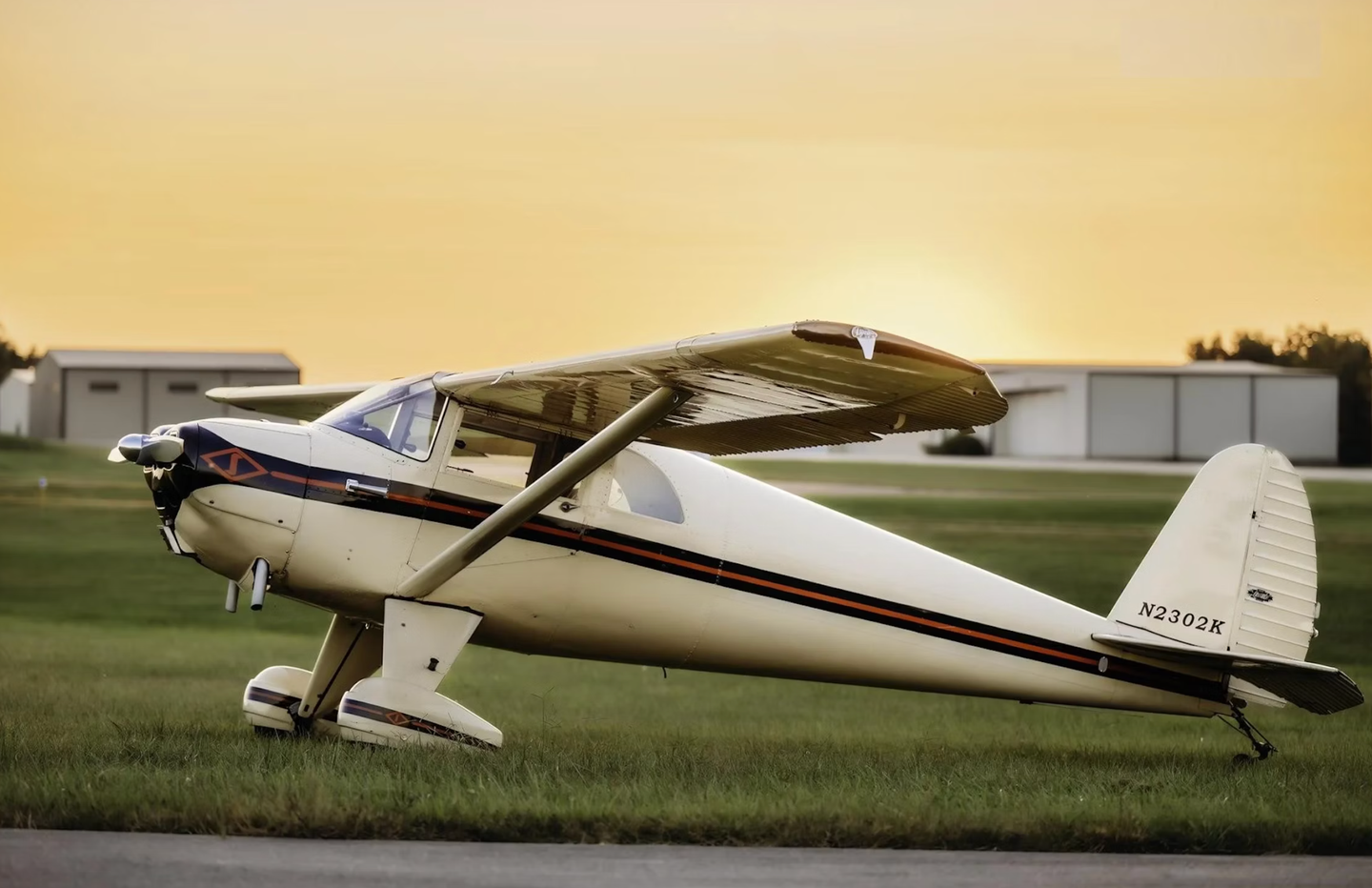
Subscribe to Our Newsletter
Get the latest Plane & Pilot Magazine stories delivered directly to your inbox

